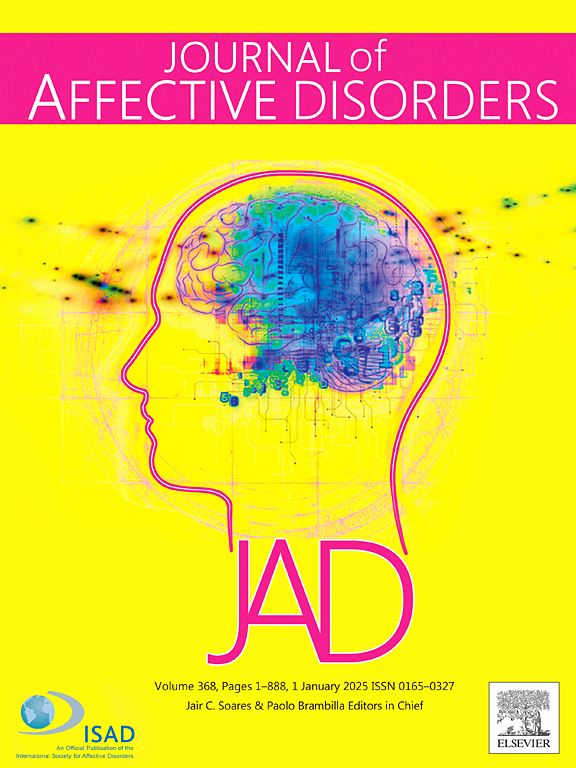Obsessive-compulsive symptoms in individuals with a history of eating disorders
IF 4.9
2区 医学
Q1 CLINICAL NEUROLOGY
引用次数: 0
Abstract
Background
OCD symptoms are well documented in anorexia nervosa (AN) and to a lesser extent in bulimia nervosa (BN), yet remain virtually unstudied in binge-eating disorder (BED).
Methods
In this cross-sectional observational study, 5927 participants with lifetime eating disorders (EDs) (i.e., past or current) were categorized into five groups based on their diagnostic histories: AN only (n = 2330), BN only (n = 740), BED only (n = 665), AN and another ED diagnosis (AN Mixed) (n = 1293), and BN and BED (BN-BED) (n = 899). Obsessive-Compulsive Inventory-12 scores were compared across these groups and with OCD (n = 1040), anxiety-related disorders (ANX) (n = 423), and non-clinical community (NCC) (n = 1194) cohorts.
Results
OCD symptoms were common among individuals with lifetime AN, BN, BED, and multiple EDs, with obsessing being the most prevalent dimension, followed by ordering, checking, and washing. The obsessing scale, which captures general intrusive thoughts rather than traditional OCD obsessions, was notably high. ED groups generally scored higher on the OCI-12 subscales than the ANX and NCC cohorts but lower than the OCD cohort, although ordering severity was higher in some ED groups. Positive correlations were found between ED symptoms and OCI-12 subscales, and gender-diverse individuals and men had greater OCD symptoms than women.
Conclusions
Clinicians should be vigilant for OCD symptoms in individuals with AN, BN, and BED. These findings call for research on the mechanisms linking EDs and OCD symptoms and support integrated treatment approaches for both conditions.
求助全文
约1分钟内获得全文
求助全文
来源期刊

Journal of affective disorders
医学-精神病学
CiteScore
10.90
自引率
6.10%
发文量
1319
审稿时长
9.3 weeks
期刊介绍:
The Journal of Affective Disorders publishes papers concerned with affective disorders in the widest sense: depression, mania, mood spectrum, emotions and personality, anxiety and stress. It is interdisciplinary and aims to bring together different approaches for a diverse readership. Top quality papers will be accepted dealing with any aspect of affective disorders, including neuroimaging, cognitive neurosciences, genetics, molecular biology, experimental and clinical neurosciences, pharmacology, neuroimmunoendocrinology, intervention and treatment trials.
 求助内容:
求助内容: 应助结果提醒方式:
应助结果提醒方式:


